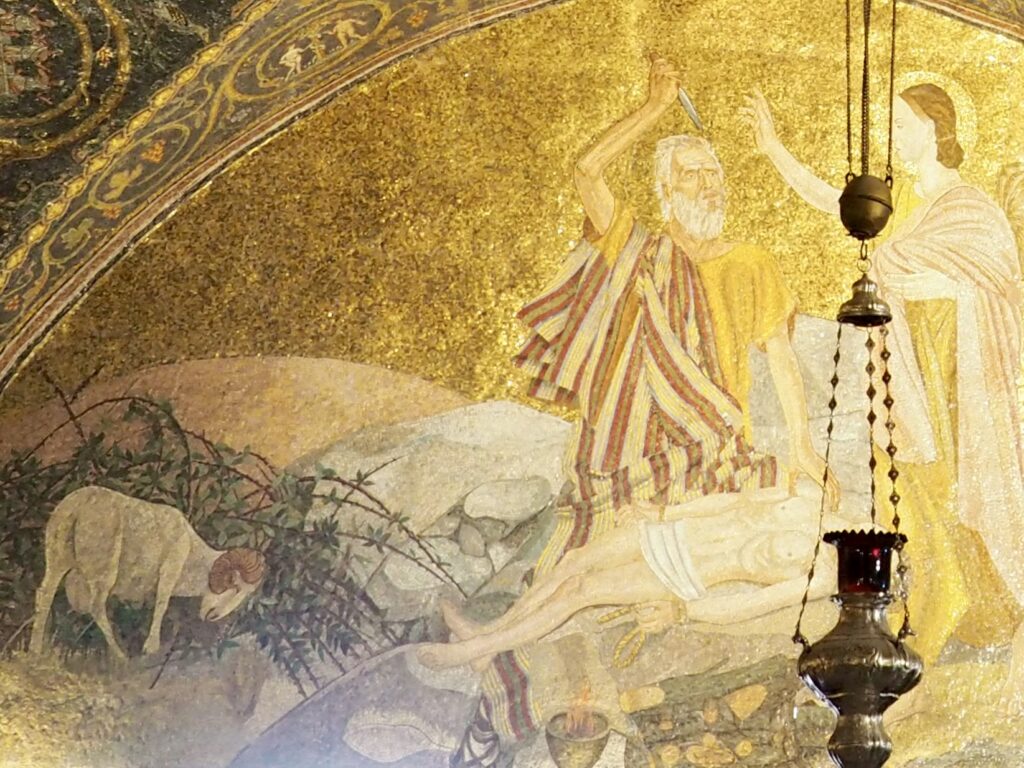
It all goes back to Abraham, the Patriarch common to all “Peoples of the Book,” revered in Judaism, Islam, and Christianity, all of which lay claim to Jerusalem as the geographic heart and soul of their faith and over which they have fought each other for millenia.
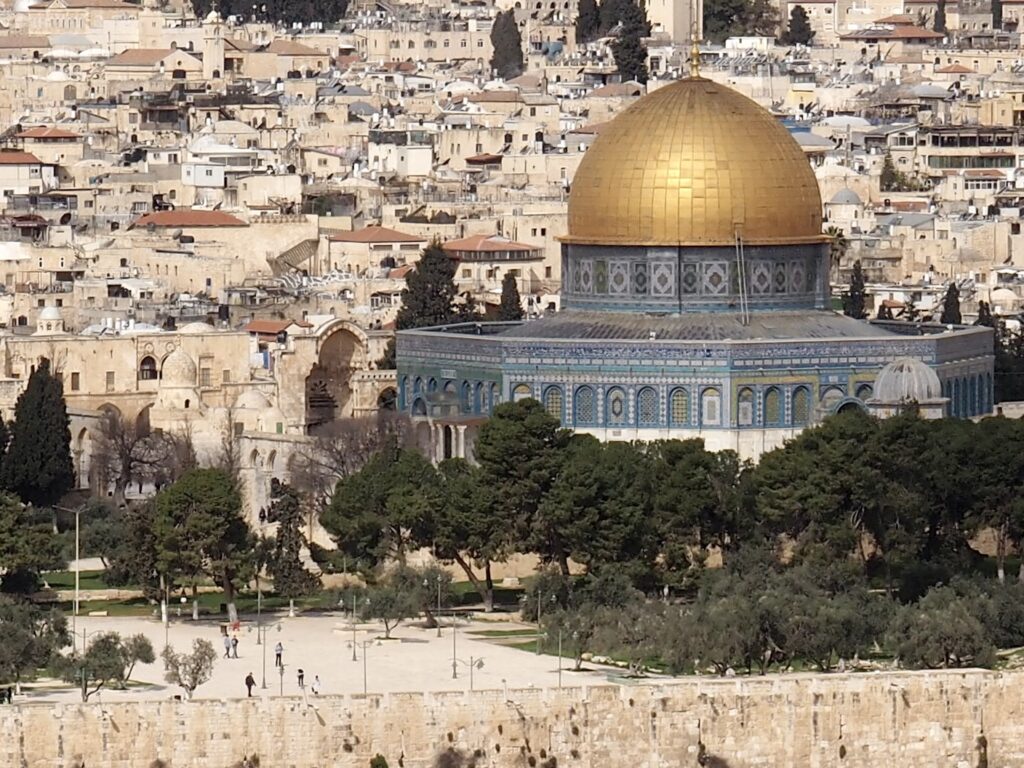
The “Rock” of the Dome of the Rock is the one upon which Abraham was prepared to sacrifice Isaac, where God created the world and formed Adam, and Mohammed began his Night Journey and ascended to heaven.
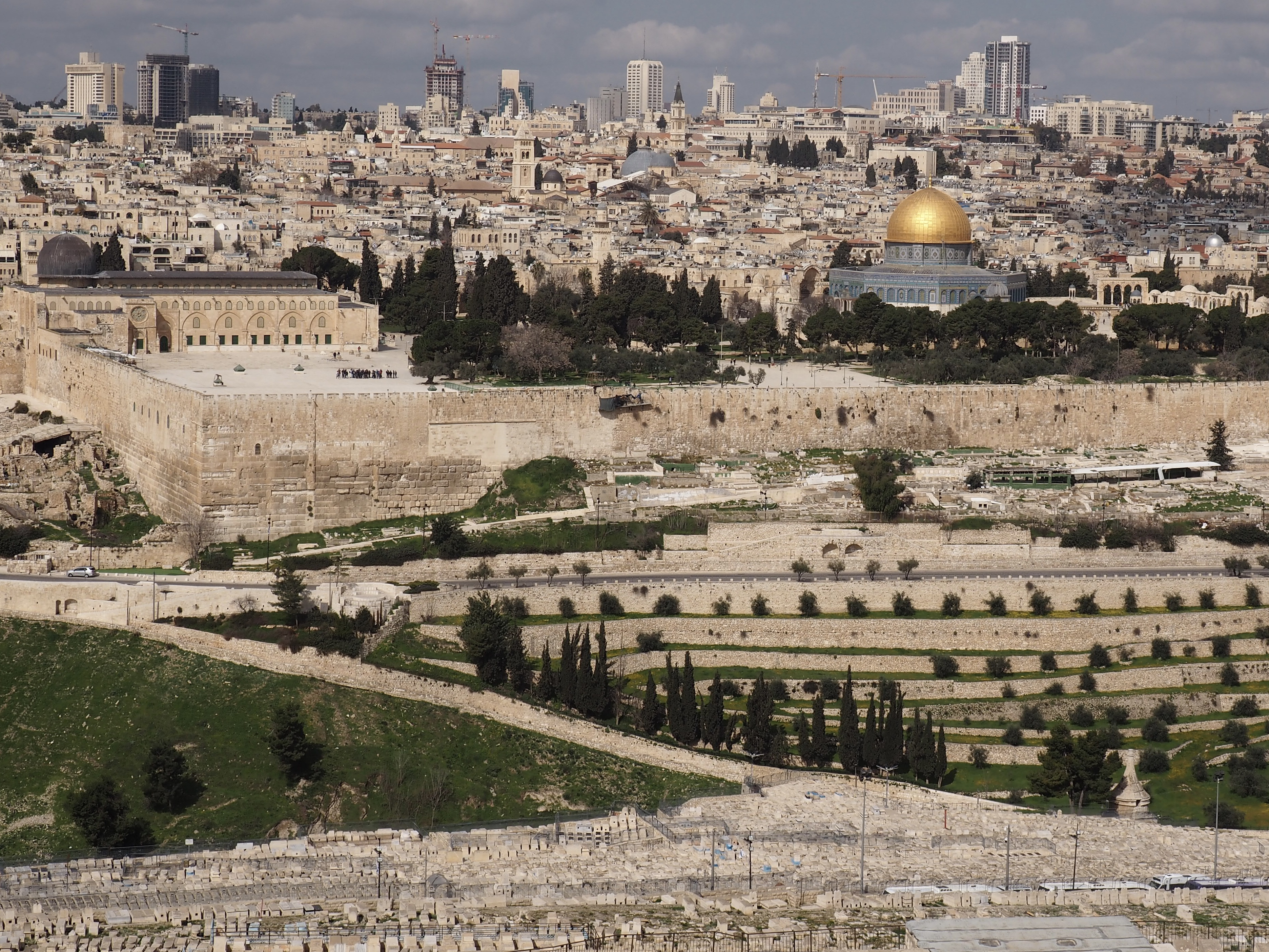
Across the breadth of the photo, above, from the southeastern corner of the city walls on the left across to where there are some arches to the right of the Dome of the Rock and including the buildings at the southwestern corner, lies Temple Mount where Solomon built the Jewish First Temple which was destroyed by the Babylonians, rebuilt by Herod the Great, then destroyed again in 70 AD. Caliph Abd el-Malik built the Dome of the Rock shrine in 691.

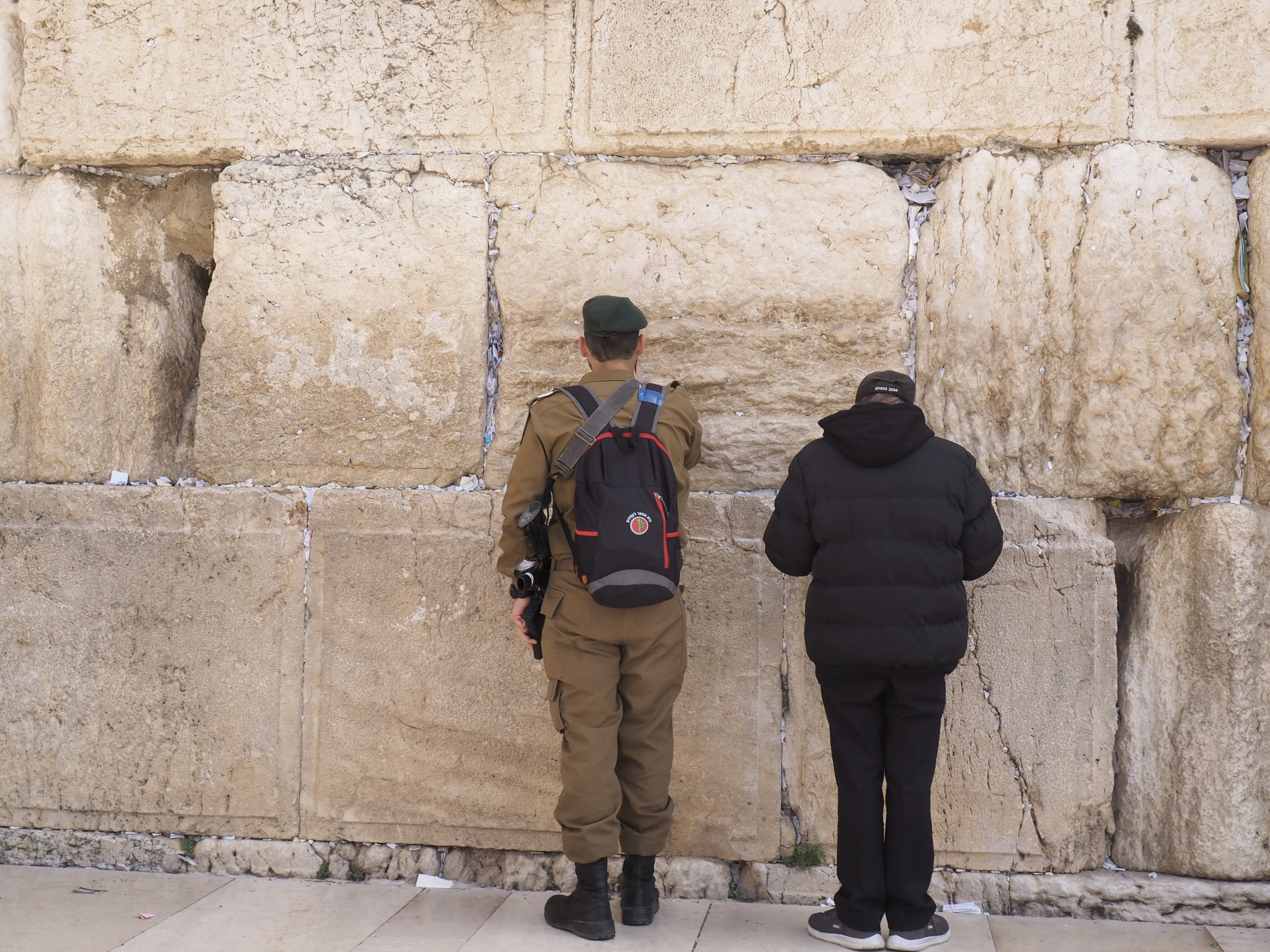
Debris from the destruction of the Second Temple remains along the base of a portion of the Western Wall (essentially a retaining wall for the Temple Mount), left above. Praying along the northern portion of the Western Wall is the closest observant Jews can get to the Holy of Holies, the spiritual junction of Heaven and Earth by the Foundation Stone (aka, the Rock at the heart of the Dome of the Rock), and the most sacred spot in Judaism coincident with a profoundly sacred spot for Muslims, as well as Christians.

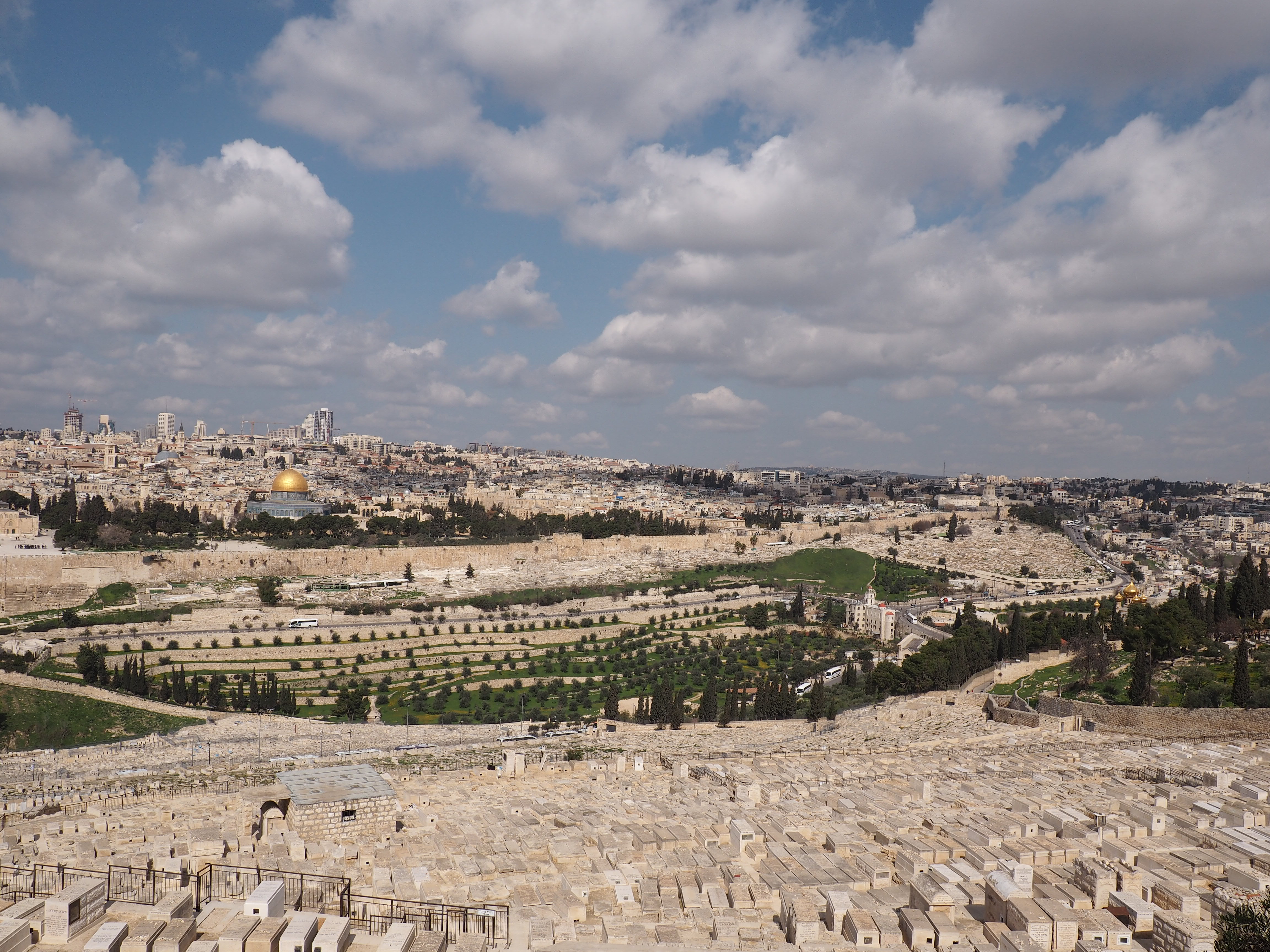
The oldest extant gate of Jerusalem, the Eastern Gate was sealed by Suleiman the Magnificent in 1541 in order to prevent the Jewish Messiah from entering Jerusalem (according to some sources). The Muslim cemetery directly in front of the gate is also reported to have been located there to thwart the same entry. The Jewish cemetery facing the gate from the slopes of the Mount of Olives is enormous, with over 70,000 souls interred there over several thousand years. Islamic belief follows that of Christianity concerning a Day of Judgment when all will be judged and consigned to their eternal fate, following a Day of Resurrection (in fact, its one of their six articles of faith). This is generally not a part of Jewish belief.
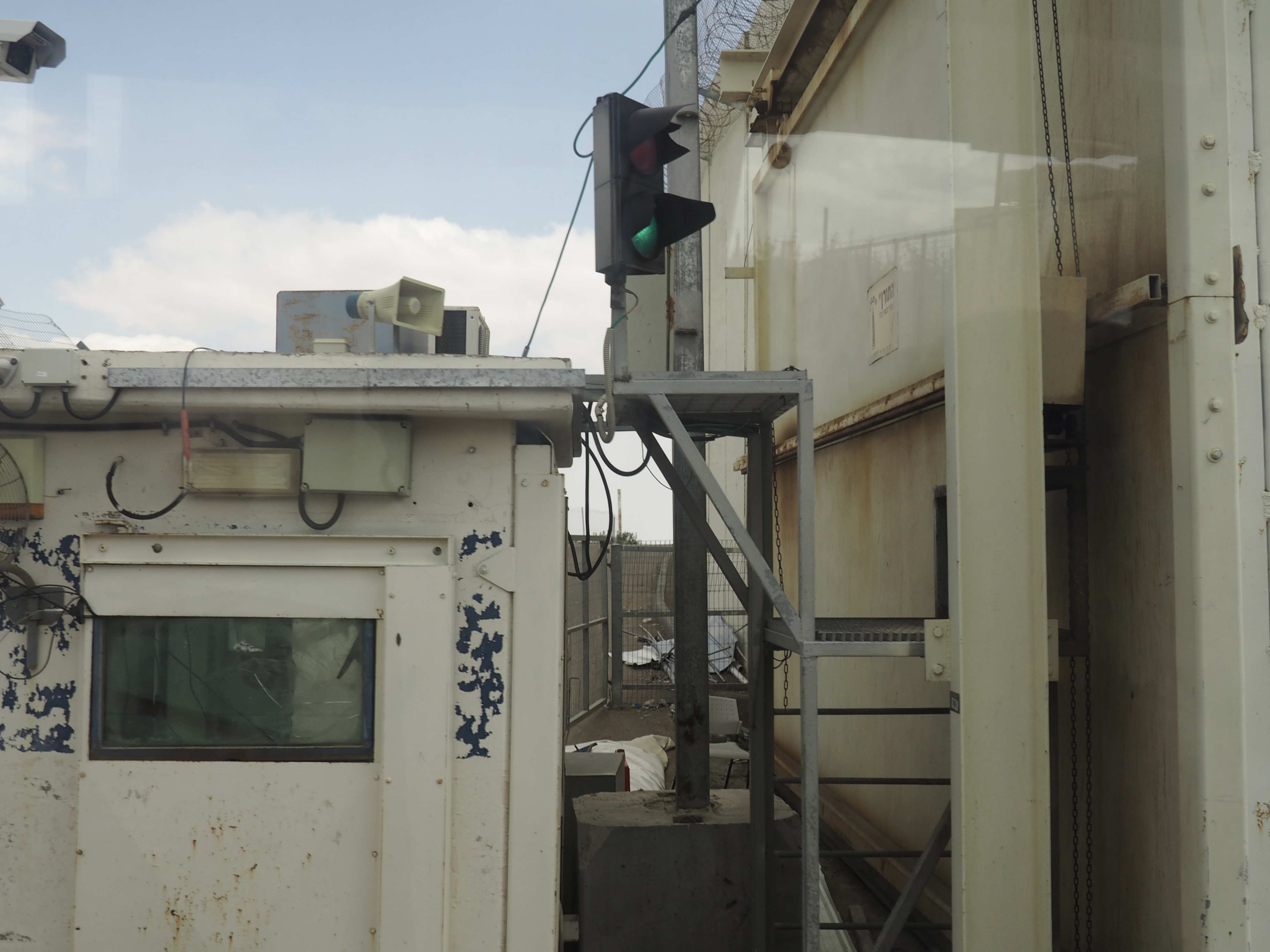
One of the most important sites in Christianity is, of course, Bethlehem, as the birthplace of Jesus. Getting there from Jerusalem involves a non-border border crossing into territory seized by Israel, but which is still contained by a formidable border wall. Our Israeli guide lamented that even though these territories were within Israel’s “international borders,” he could not freely go there. We were met by a Palestinian Christian guide for this leg of the journey.
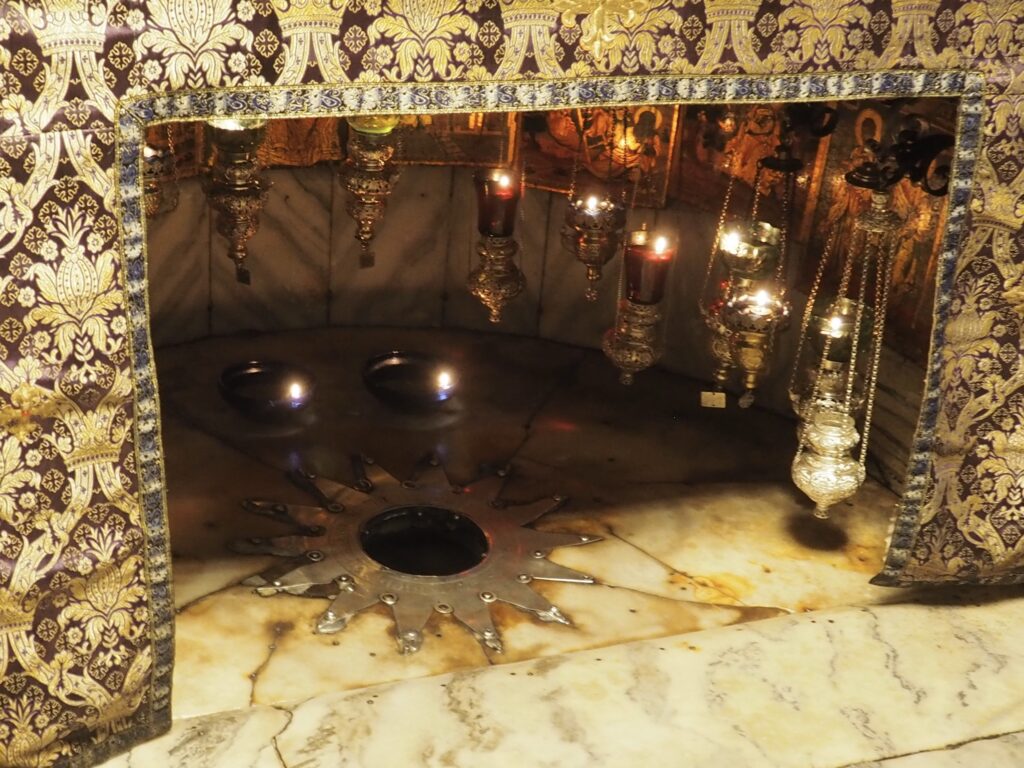
Since at least the Second century, a specific site has been associated with the birth of Jesus. It is one of the many caves beneath the town. Justinian erected the Church of the Nativity over it in the Sixth Century over the remains of a church erected by Constantine in the Fourth Century. It was then renovated by the Crusaders in the Eleventh Century. A star marks where tradition has it that the birth of Jesus occurred and the location of the manger is mere steps away. The Church has been controlled by the Greek Orthodox, Roman Catholic and Armenian Apostolic churches for 250 years under the terms of an agreement to keep peace among the Christians, called the Status Quo.

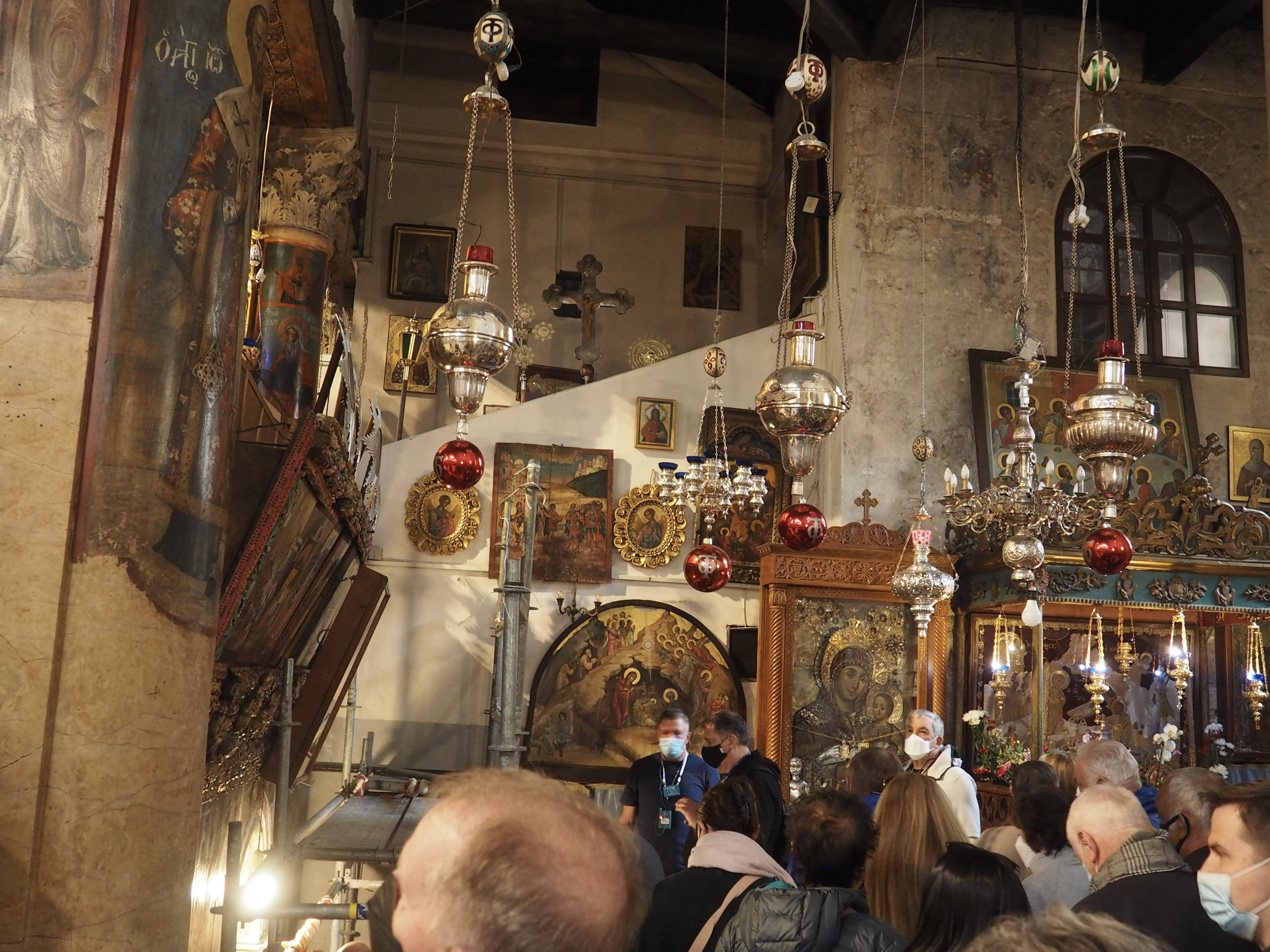


Known as the Door of Humility, the main entrance of the Church of the Nativity was reduced in size to preclude those overeager Crusaders from entering the church on horseback.

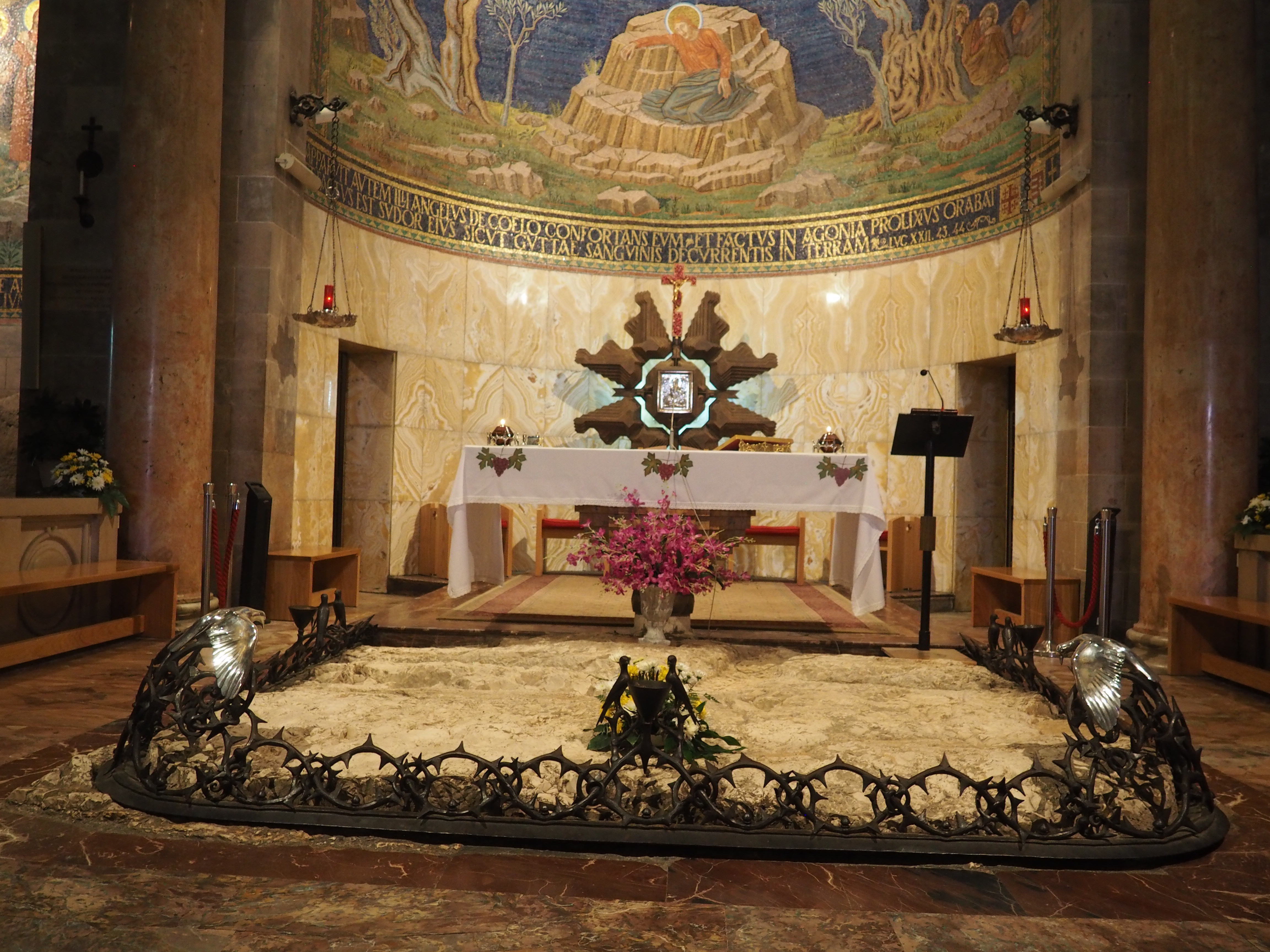
There are truly ancient olive trees growing in the Garden of Gethsemane, some nearly a thousand years old, making plausible the claim that their ancestors provided shelter for Jesus in his time of doubt and torment.
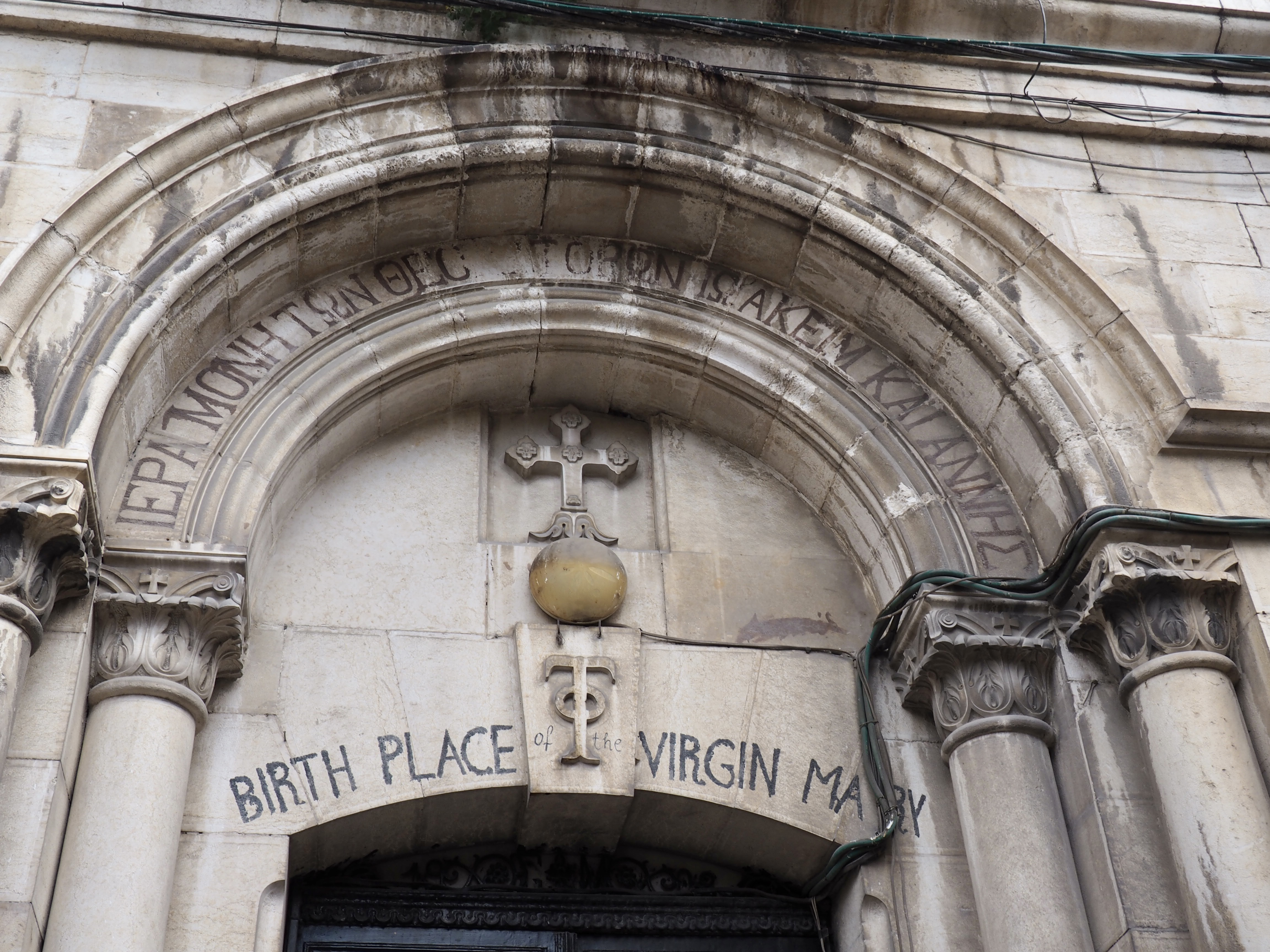
As is true throughout Jerusalem, rival denominations have erected rival churches each putting forth competing narratives of the Christian story as matters of faith. There are four different locations claimed as the place where Jesus prayed on the night he was betrayed. As our guide put it, these are not matters of fact, but of faith.

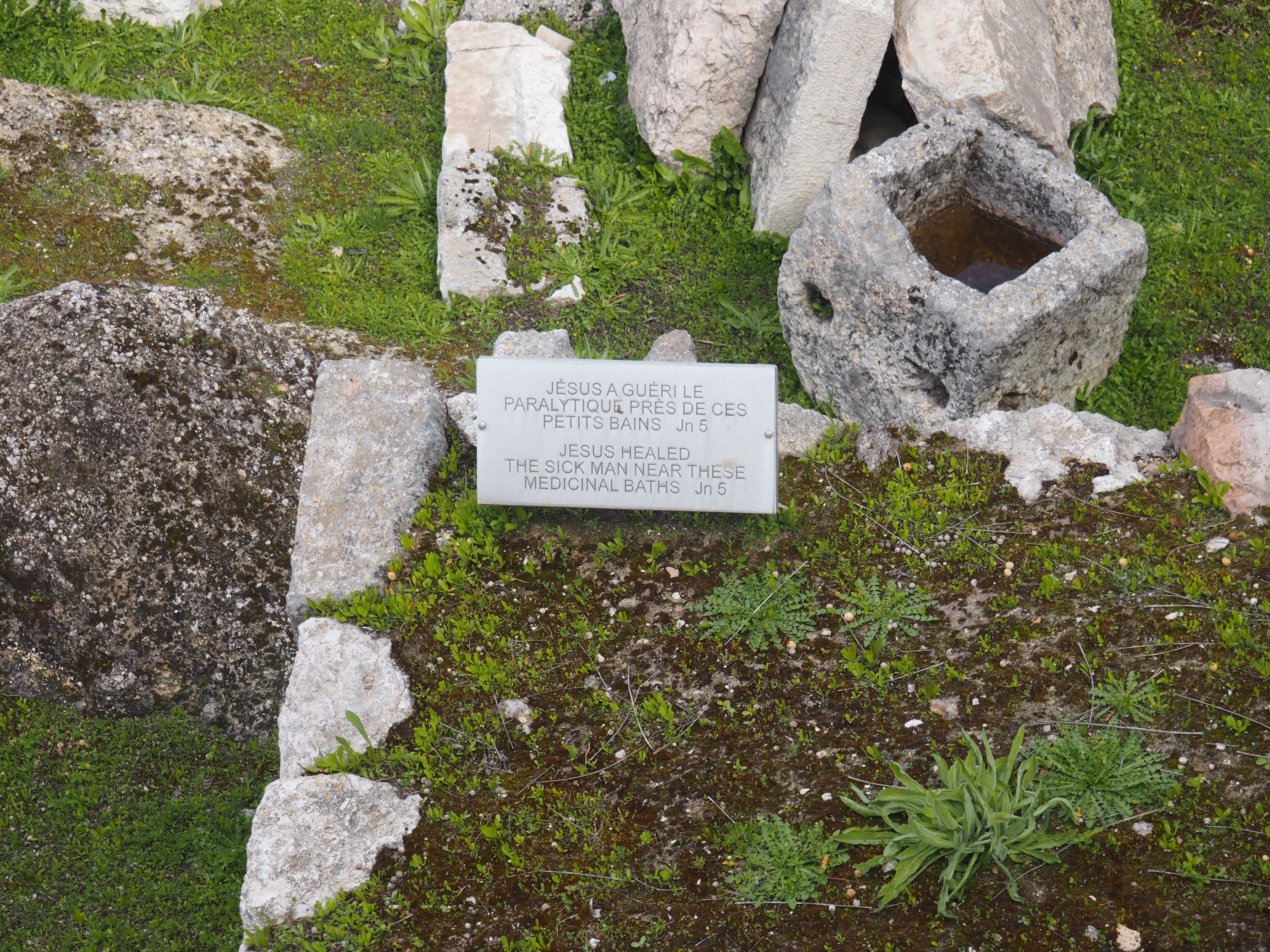

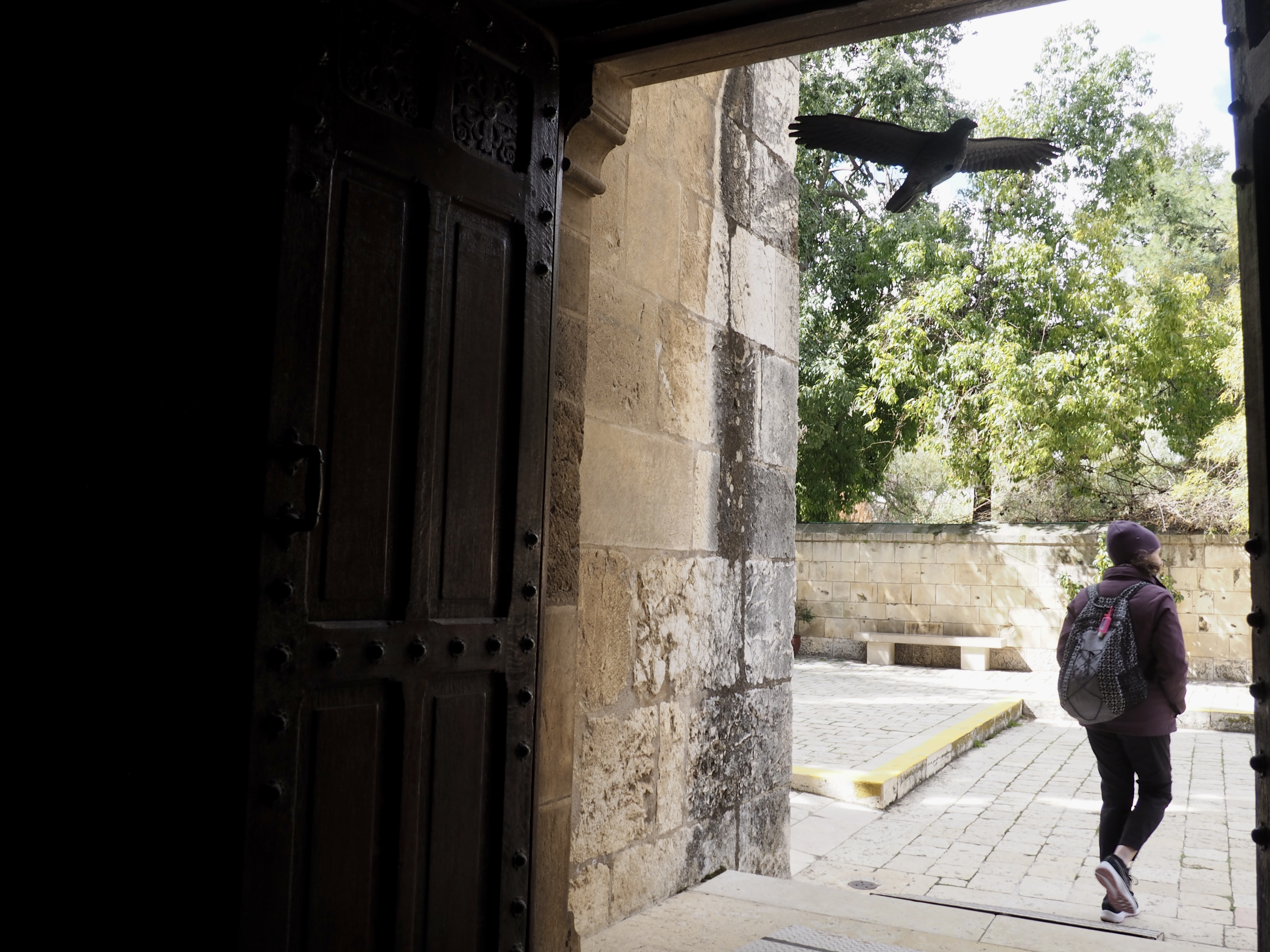
Administered by the White Fathers (Missionaries of Africa), the Church of St. Anne and the site of the Pools of Bethesda were presented by Sultan Abdulmecid I to Napoleon III in 1856. When we visited, a group of American tourists were standing in a circle singing hymns in the church. (Remember, any photo can be enlarged by clicking on it.)
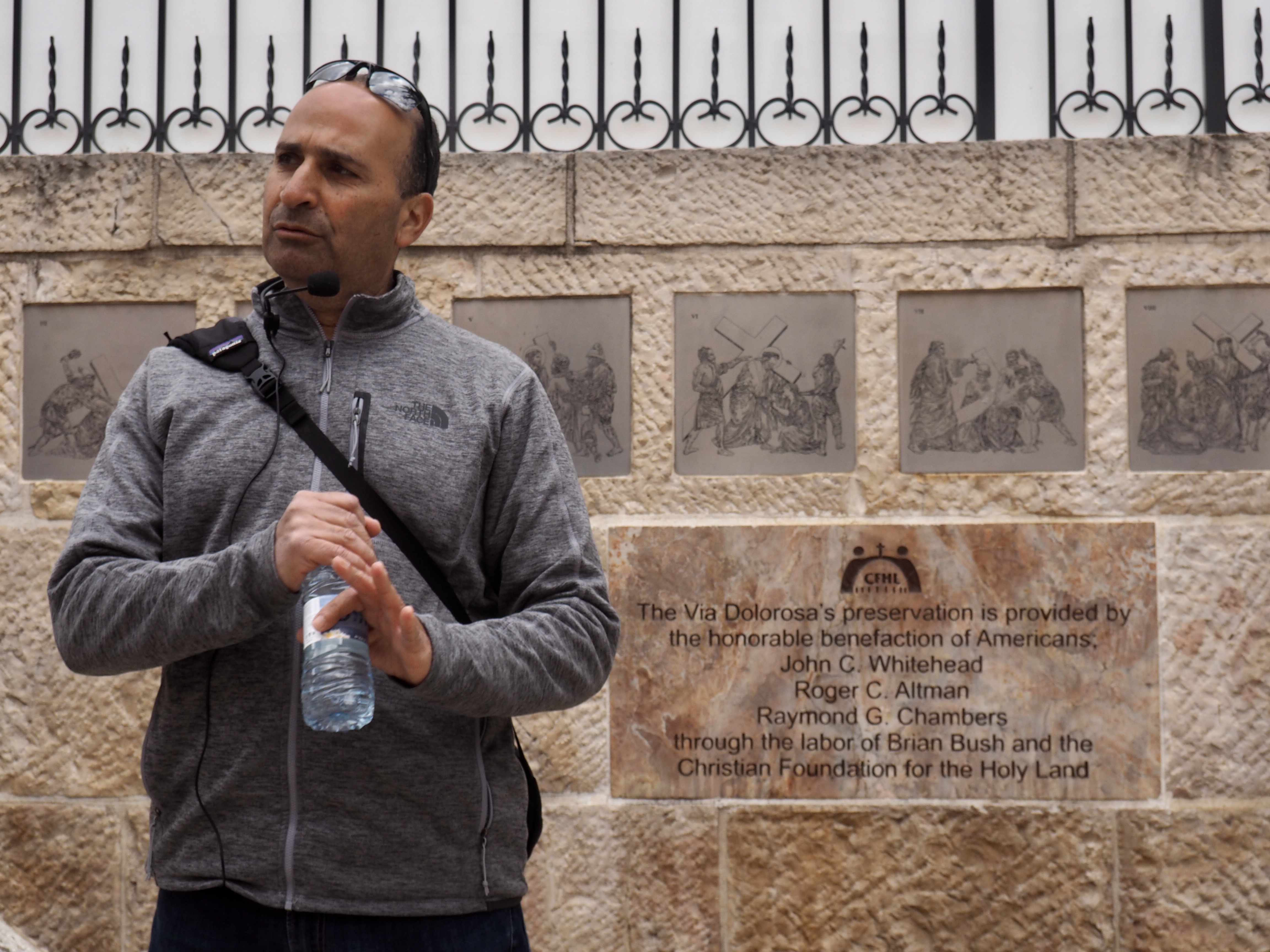
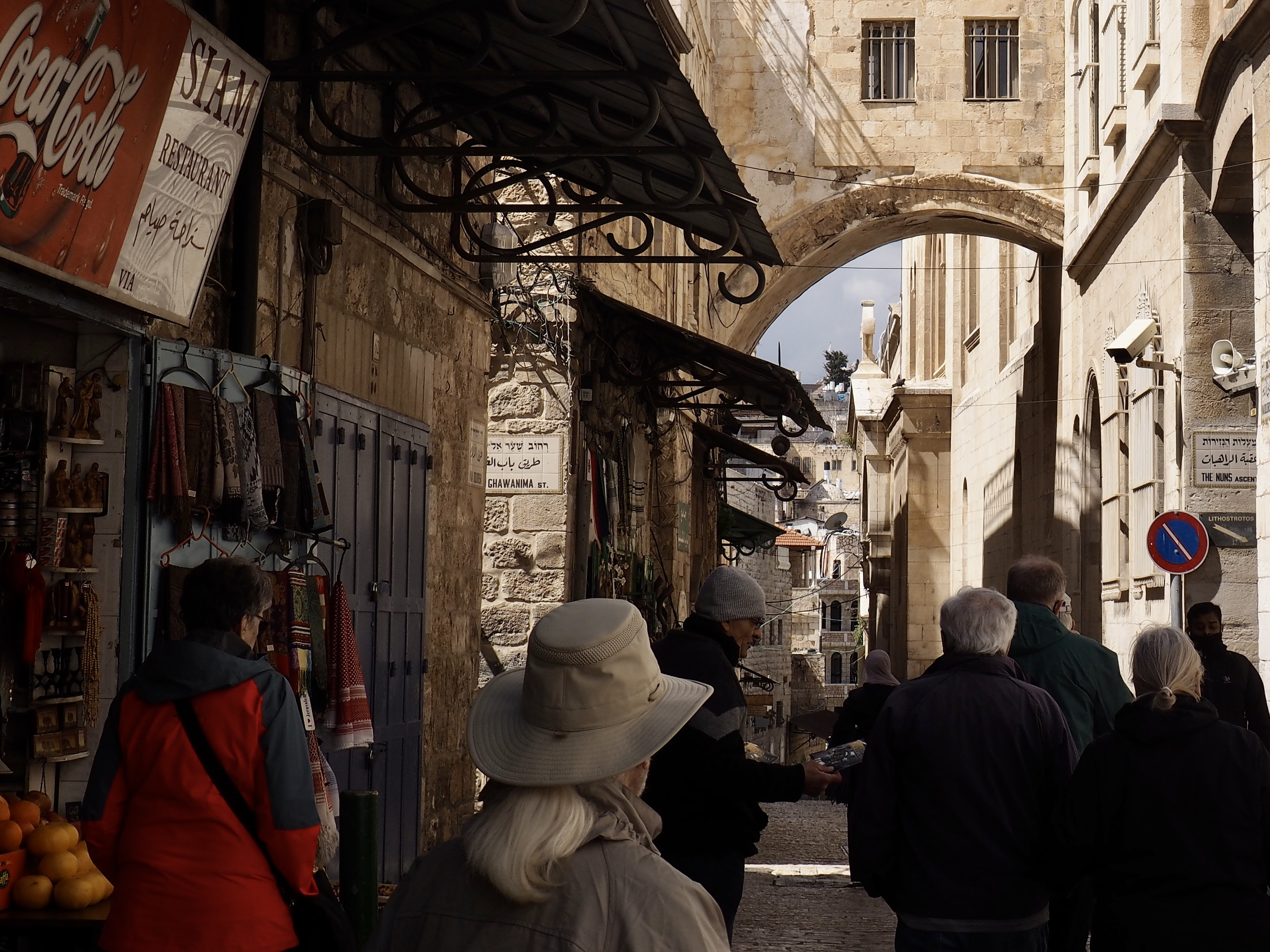




There are 14 Stations of the Cross along the Via Dolorosa, the last five of which are inside the Church of the Holy Sepulcher. It’s not a street, but a route through the Muslim Quarter and ending in the Christian Quarter. An effort to follow the last steps of Jesus began in the Byzantine era and had many different interpretations which began to take clearer shape in the fourteenth century when the Pope put the Franciscans in charge of the Holy Land. Even though the most recent archeological evidence points to a different route, the current route is now well established.
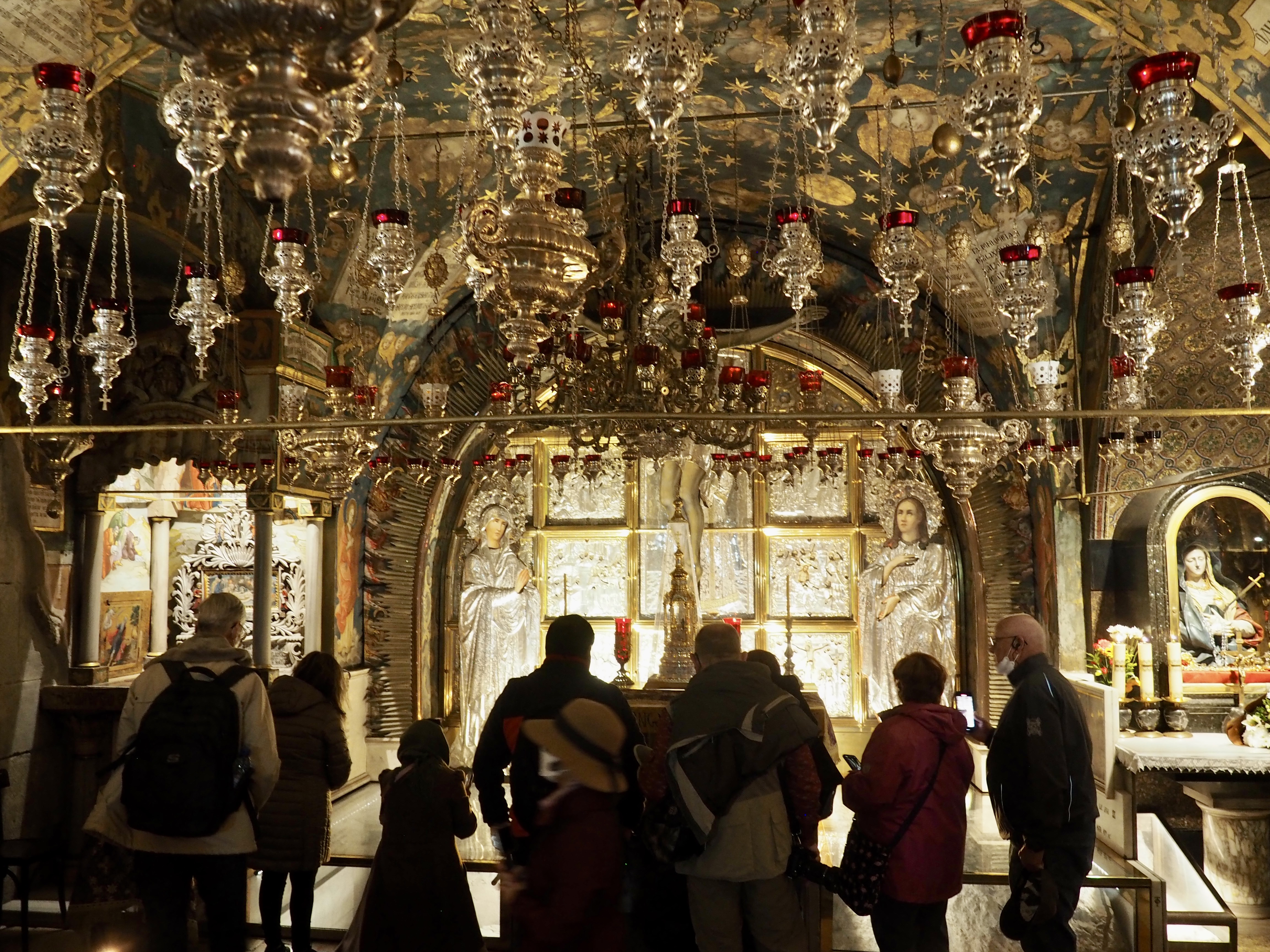
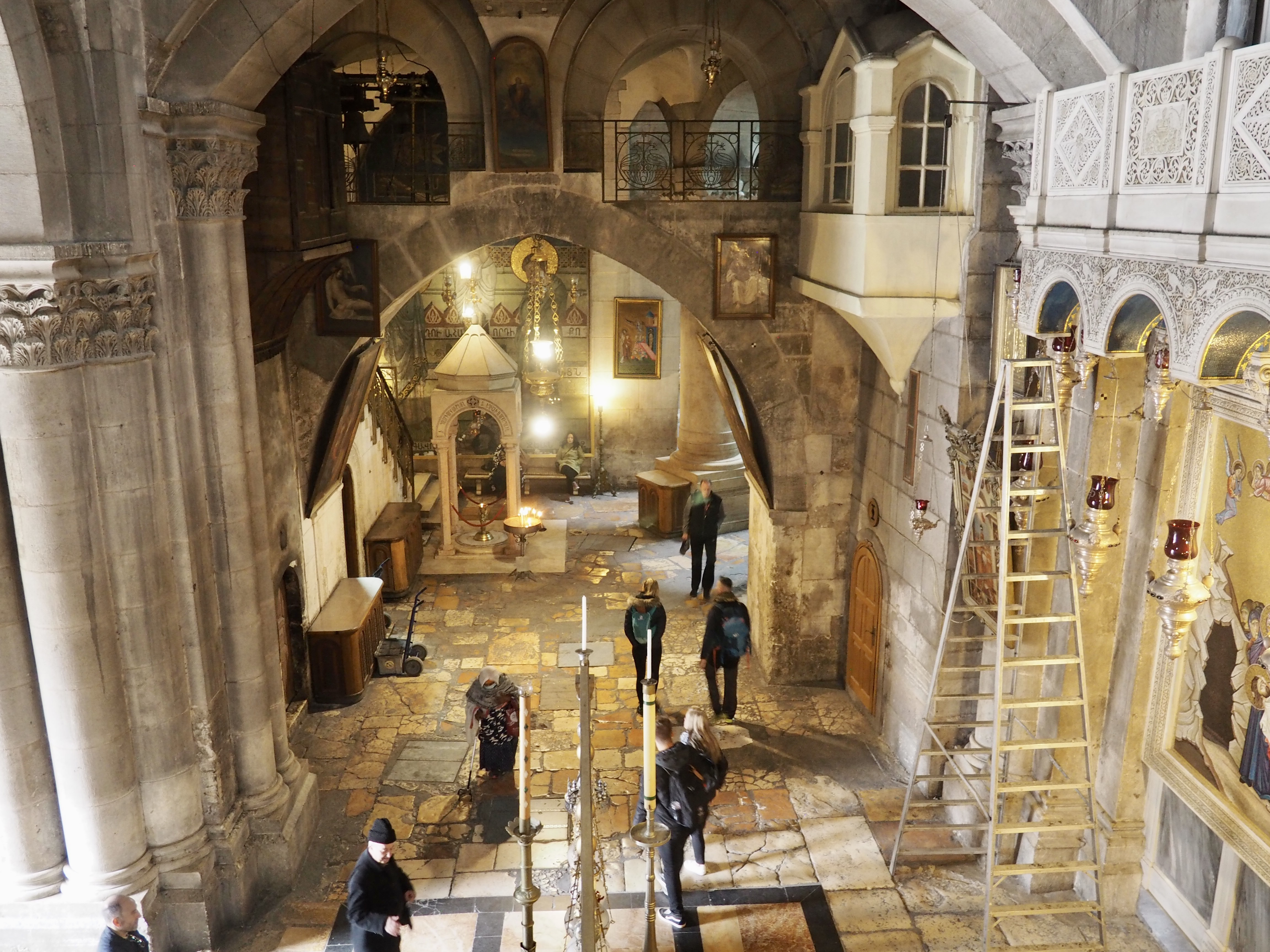

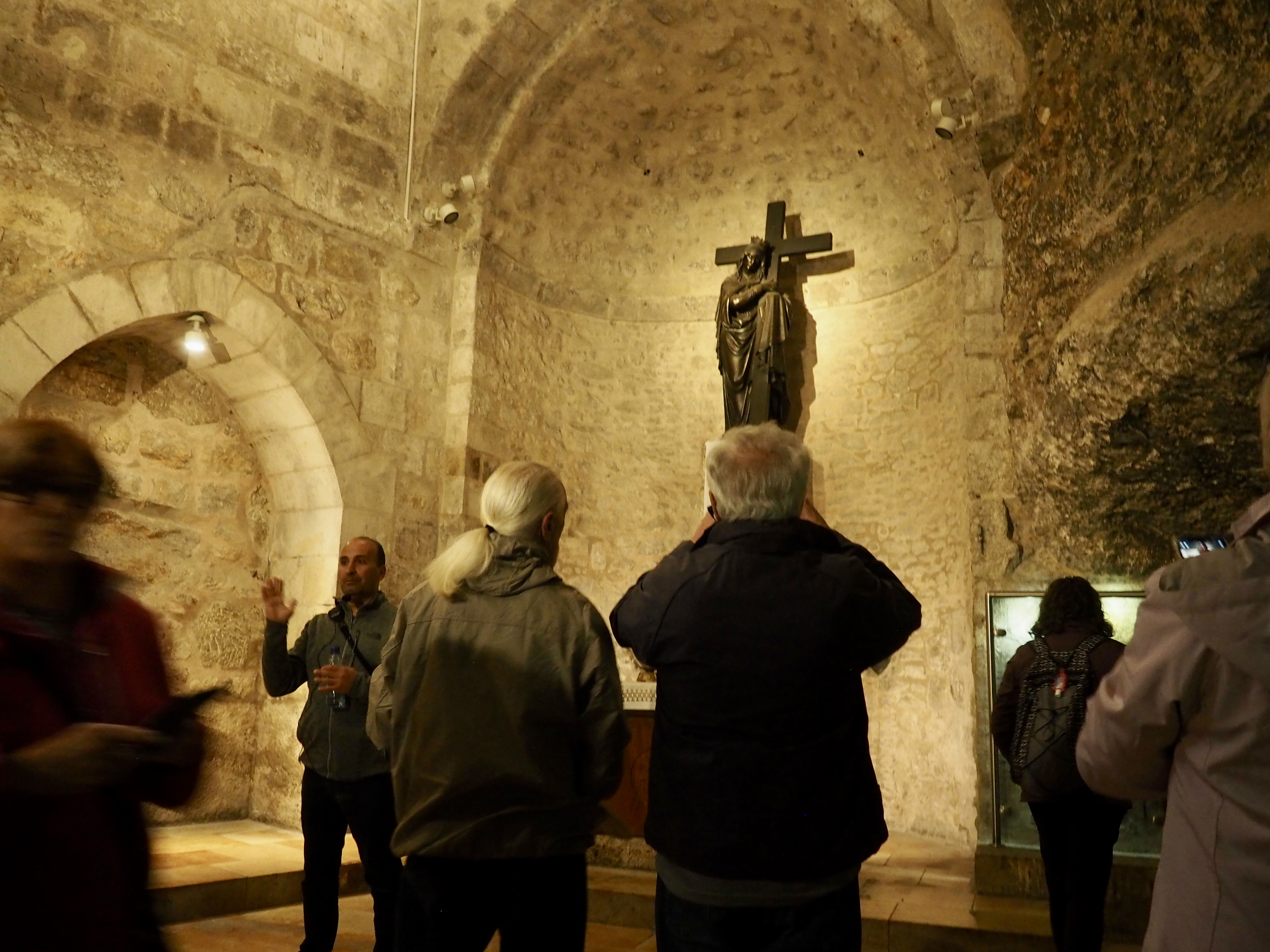

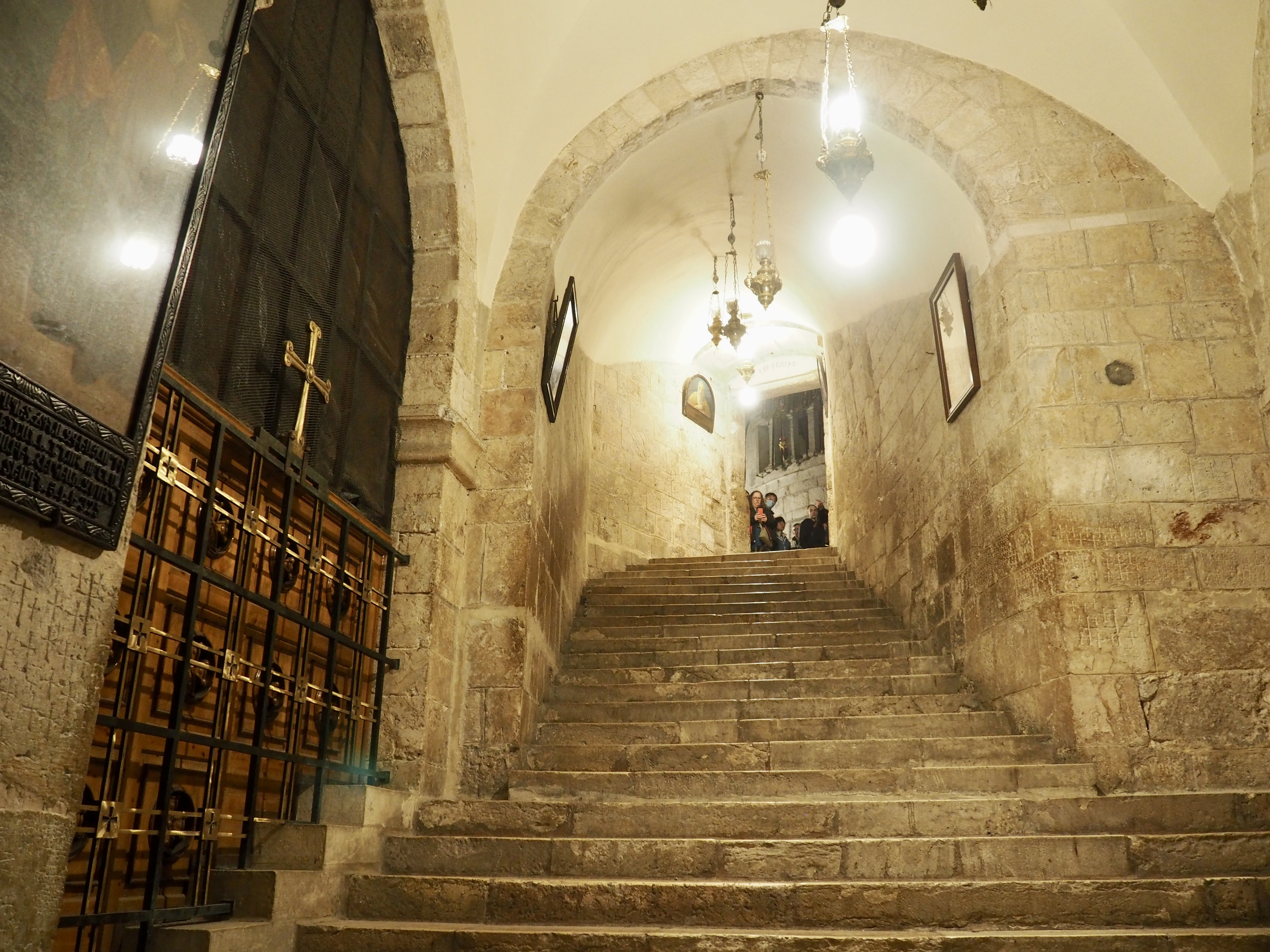


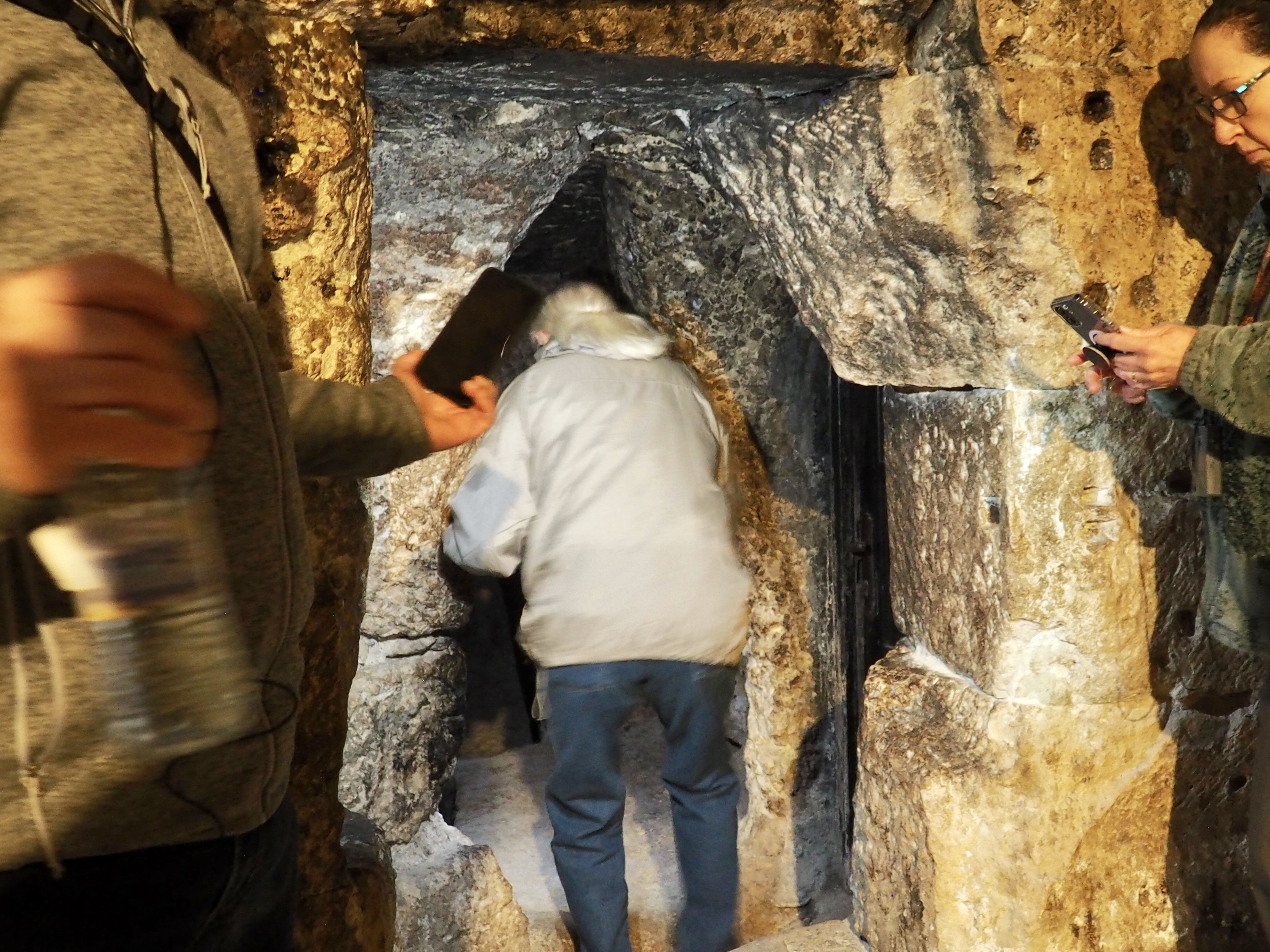

When Constantine converted to Christianity, he dispatched his mother Helena to Jerusalem to find Christ’s tomb. She was led to the site of a Temple to Jupiter/Venus which had been erected over a cave that had been filled in to create a level area on which to build. Constantine ordered the Temple demolished and the church to be built in 326 and it was consecrated in 335. Since that time, the church has gone through long and complicated series of destruction/protection by Muslim rulers, rebuilding by Christian rulers, contests for primacy, Crusades, and the Status Quo. The property is shared by the Roman Catholics, Greek Orthodox, Armenian Apostolic, Coptic Orthodox, Syriac Orthodox, and Ethiopian Orthodox. It is regarded as the site of both the site of Jesus’ tomb and of Golgotha, the site of crucifixion, and contains the final Stations of the Cross on the Via Dolorosa.
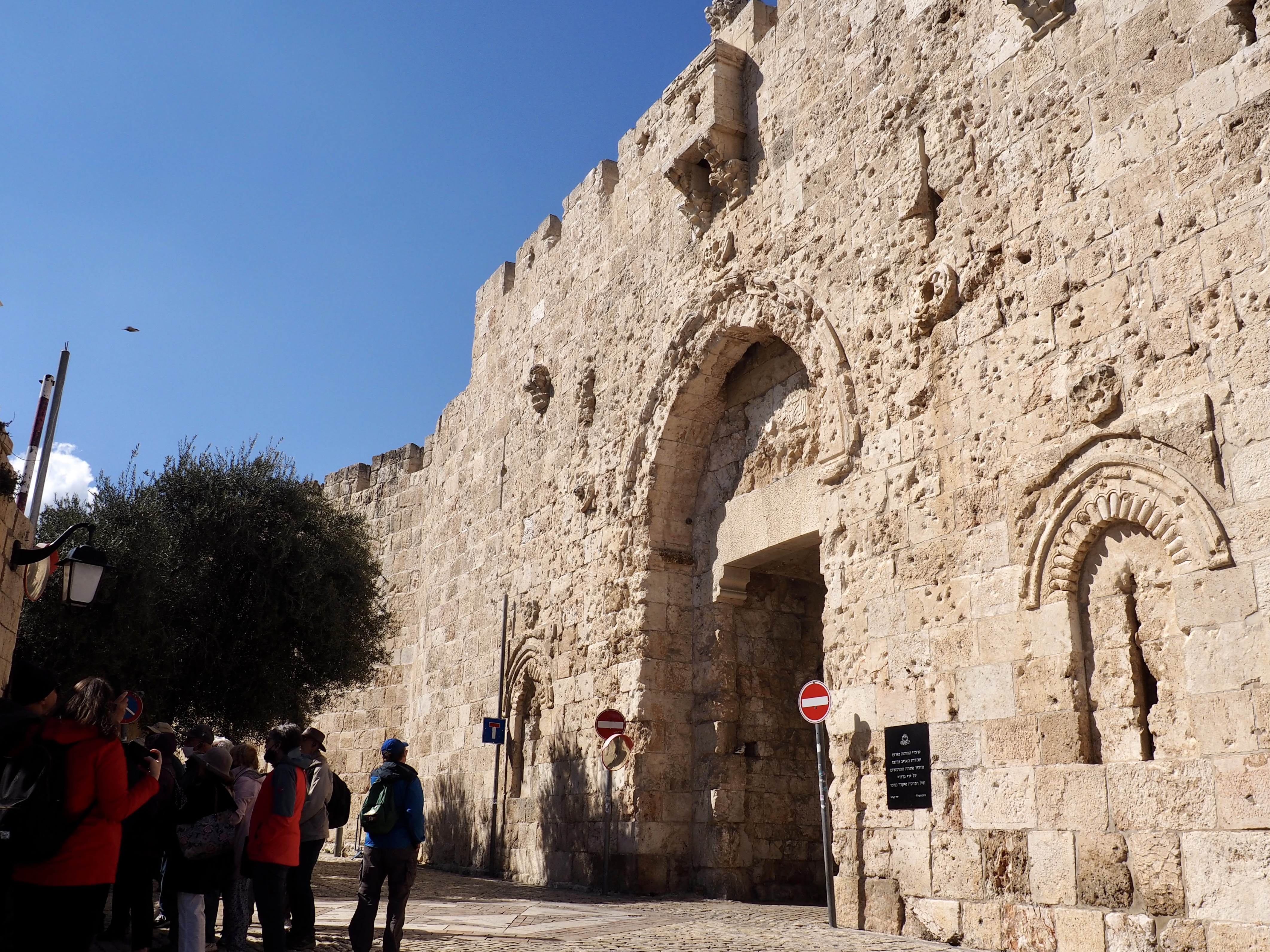
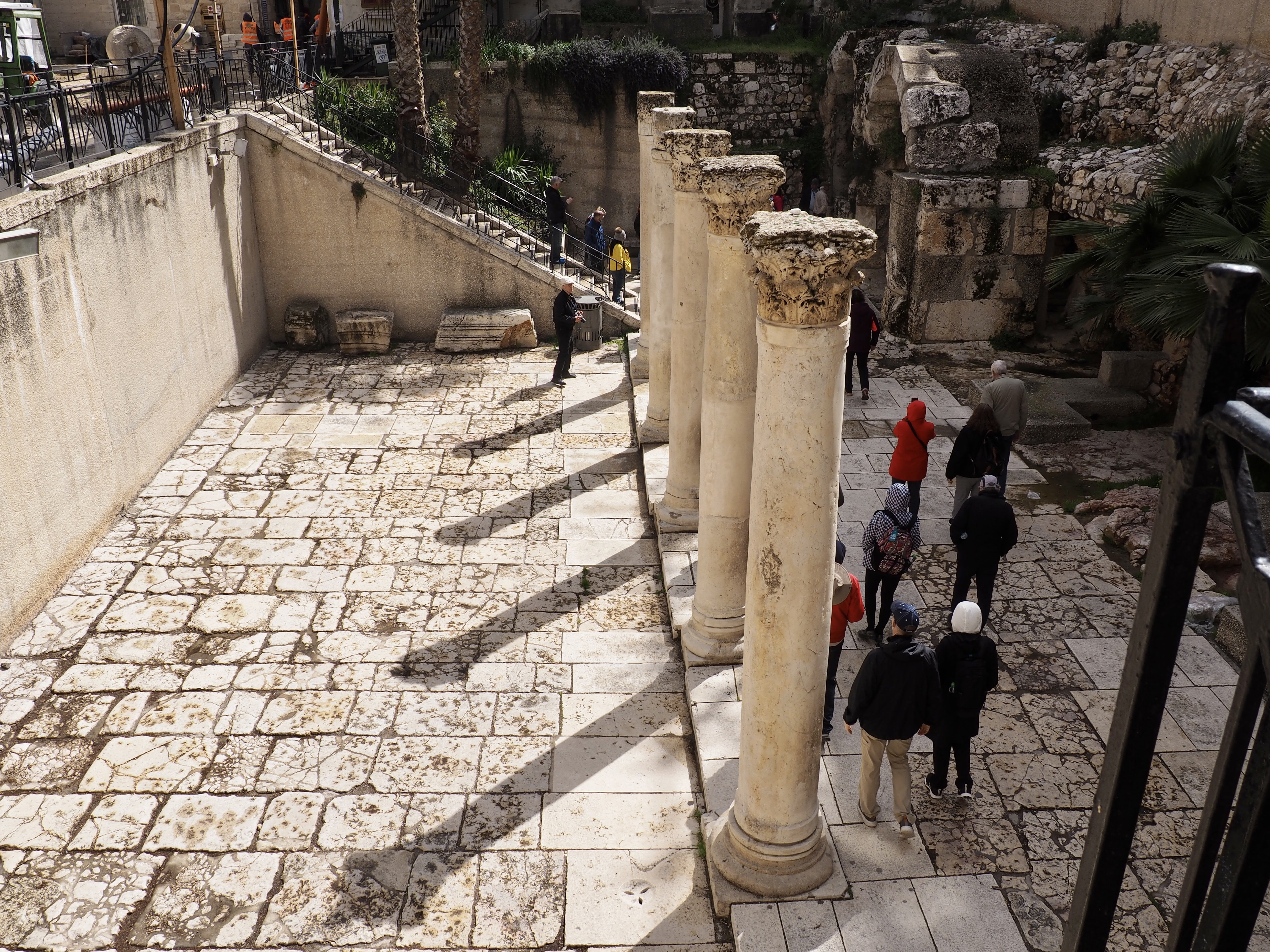
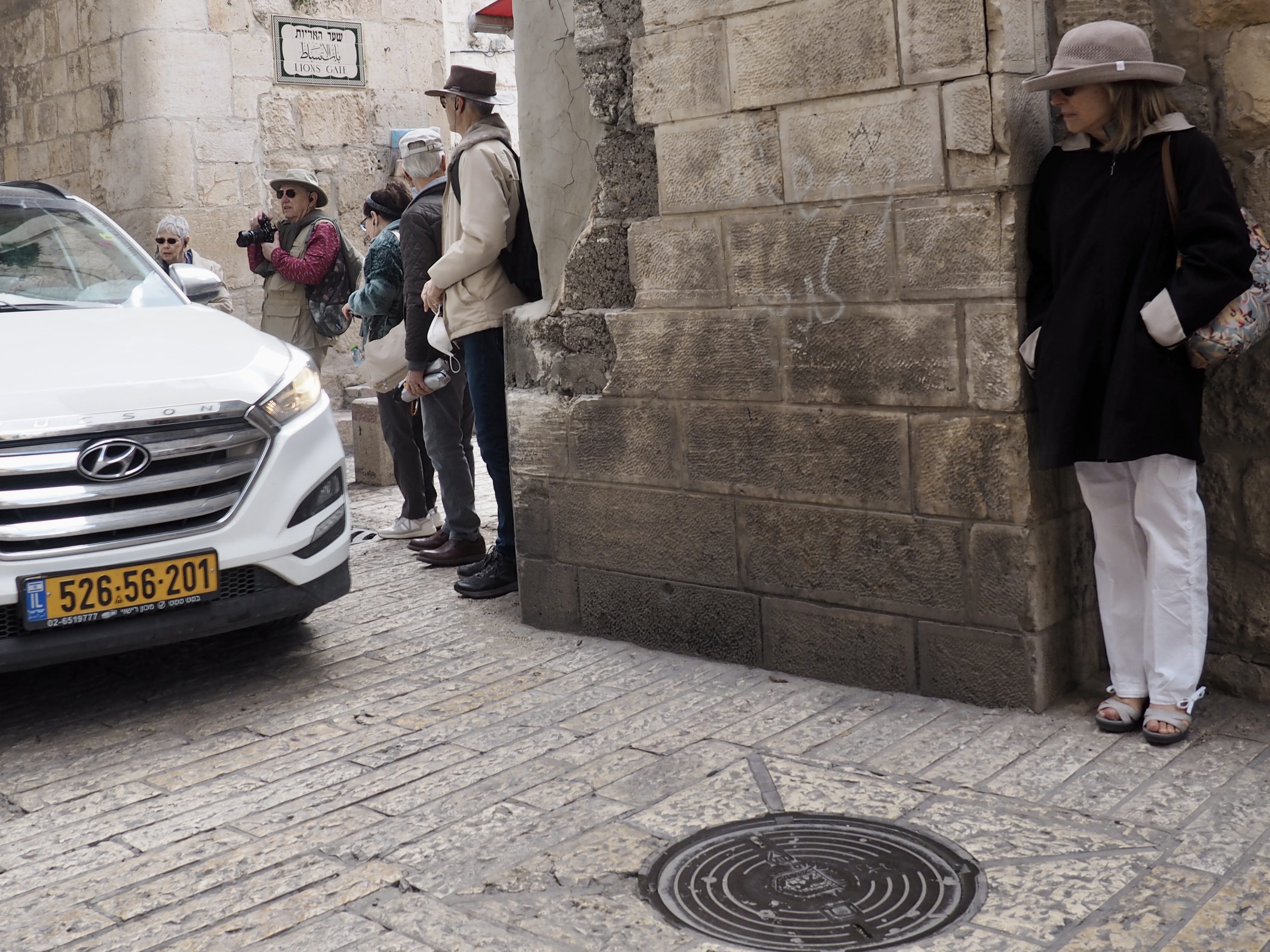



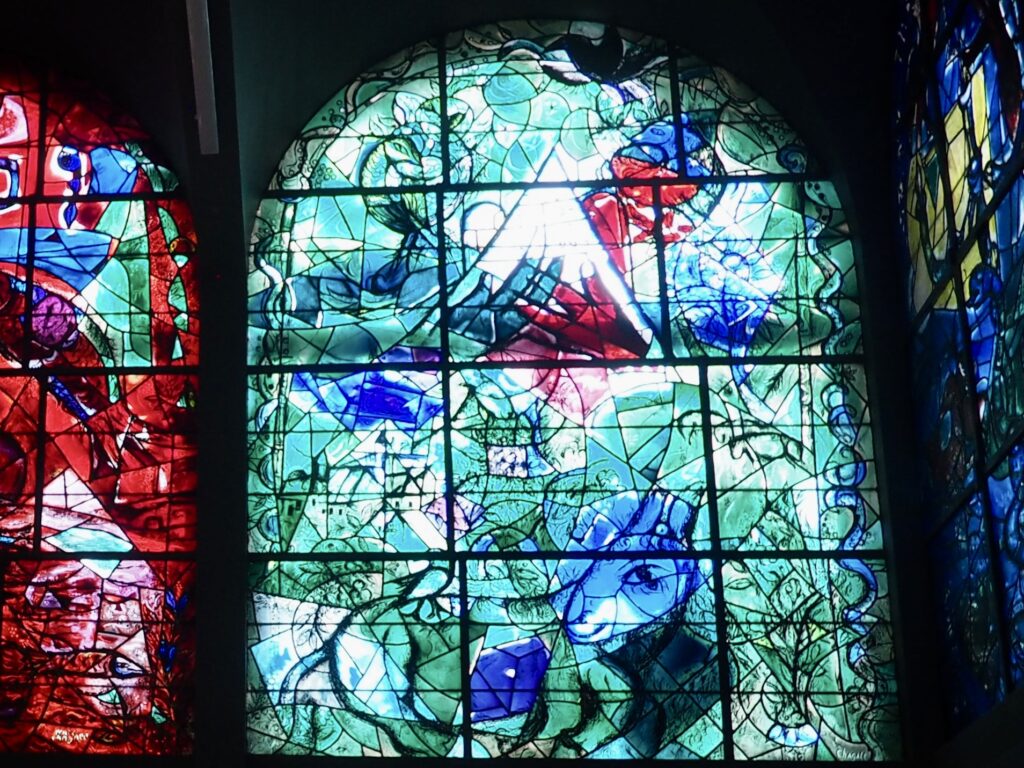
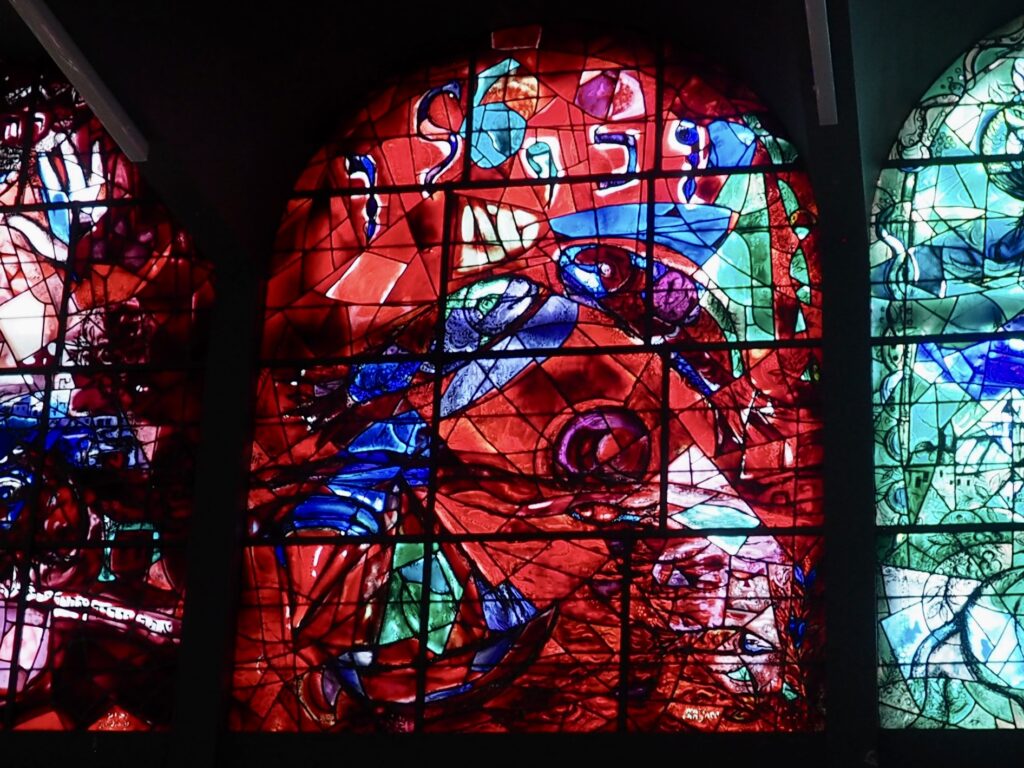
representing the 12 Tribes of Israel

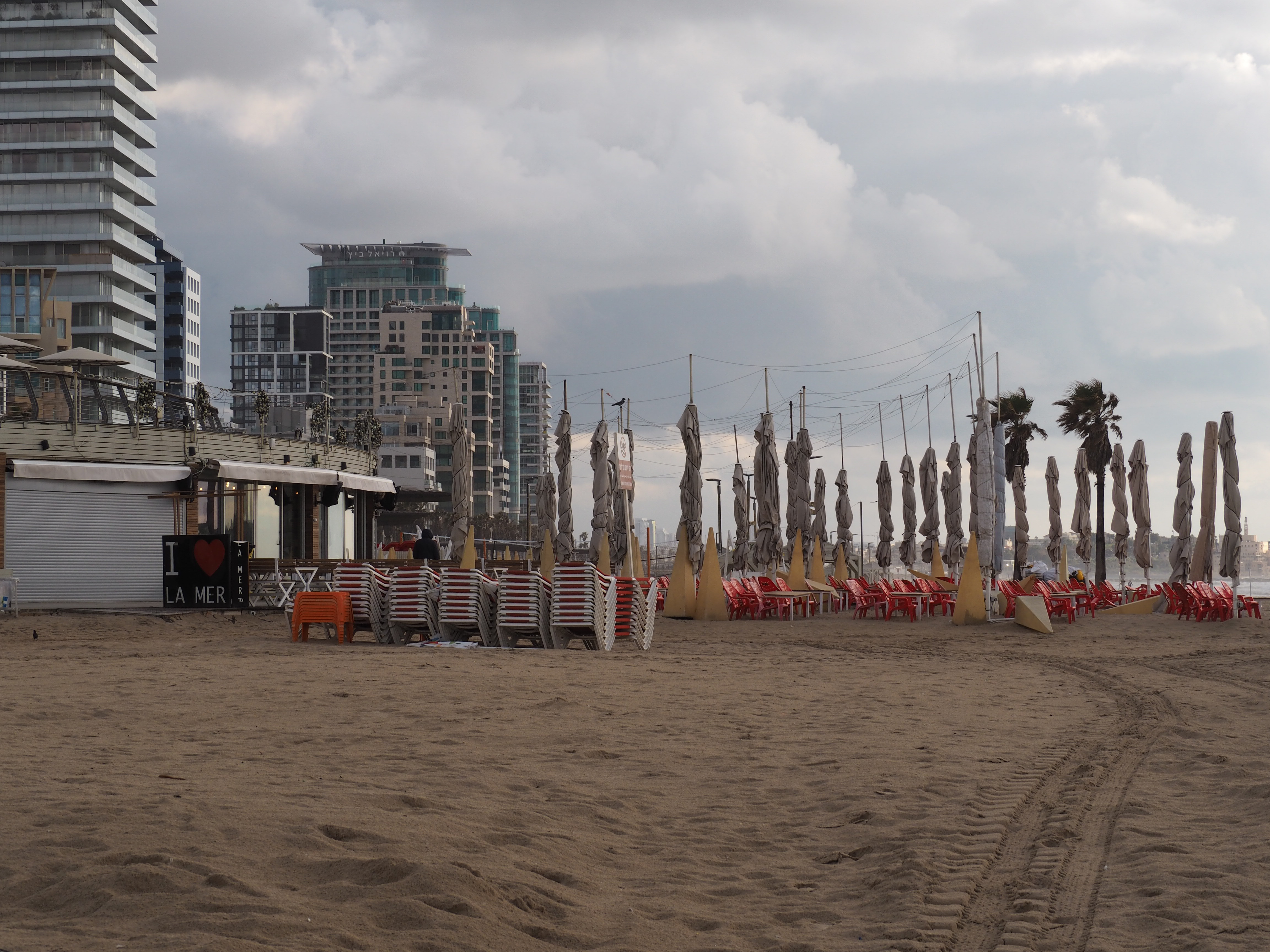


A last minute change to the itinerary brought us to Tel Aviv and a welcome respite in the city’s relatively relaxed and cosmopolitan atmosphere, making us realize that Embassy staff must have been quite disappointed when the US moved our Embassy to Jerusalem.

